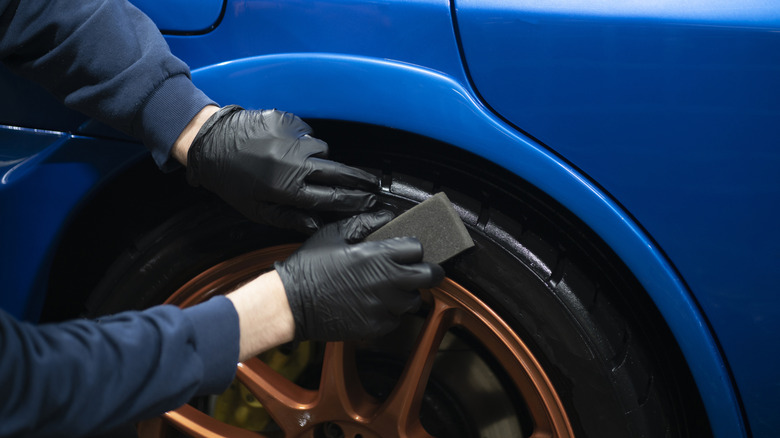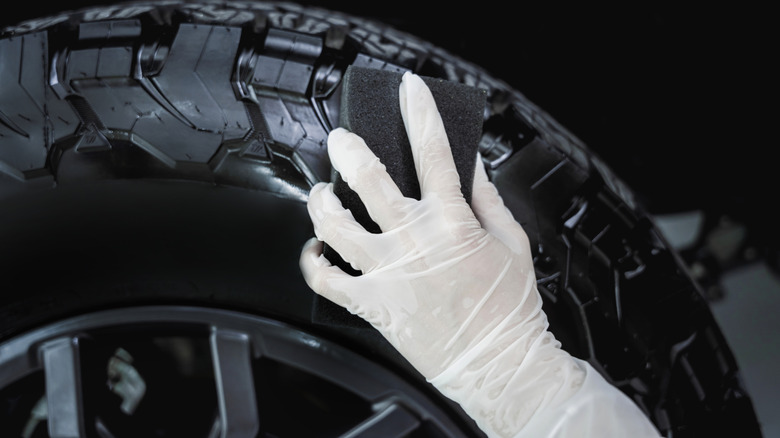Is Tire Shine Bad For Your Tires? What You Need To Know Before You Buy
Tires are one of the most important components of a car because they impact performance, safety, and efficiency. They cushion against vibration, provide grip for steering, braking, and acceleration, and support the weight of the entire vehicle. Since they're so important, it's crucial that you use good tires, keep them in great shape, and avoid the common mistakes that shorten tire life. Using tire shine is one practical way to help maintain tires, but it also has its drawbacks.
Using tire shine might be seen as less important than monitoring tread depth or maintaining correct air pressure, but applying it is also part of tire care. It's often made with silicone polymers and UV absorbers, although this depends on the exact type. The primary uses of tire shine are to enhance the appearance and protect the tires against water, dirt, and UV radiation. This helps prevent the rubber from yellowing, drying out, and breaking — extending its life and maintaining its appearance.
Alongside its benefits, tire shine can also have disadvantages, including potential damage from certain chemicals, which can dry out and harden the tire. Some formulations of tire shine are quite slippery, and applying too much on the tire footprint can decrease grip, which is a serious driving hazard. Additionally, overspray and fling-off can stain a car's paint. Lastly, overspray that lands on the brakes can leave a sticky residue, which in time will attract dirt and debris that can damage the components.
How to use tire shine correctly
Tire shine products come in several types, including wax, sealant, and dressings. Wax-based tire shine gives a wet look and a protective layer on the tire sidewall. These are typically used on clean, dry tires, and they need to be buffed afterward. Sealant-based tire shines provide a dark, glossy finish, and they shield tires from UV light to avoid fading and cracking.
Tire dressings, on the other hand, come in two variations. The first is solvent-based, offering a vivid shine due to greater silicone content, but it also evaporates more quickly. Then, there's water-based, which uses water as the carrier and is considered a more eco-friendly option.
In addition, tire shine can be categorized based on its application method, which includes aerosol (either a spray bottle or spray can), gel, cream, or liquid. While a spray can is easy to use, all the other options are applied with a foam pad or a cloth. For best results, the tires should be cleaned and dried before applying it.
There are several myths about tires, including concerns about tire shine. Using it has both pros and cons, but because there are several options available, it all comes down to finding the right option for your needs. When used correctly, tire shine is one of the key ways to make your tires last longer.

